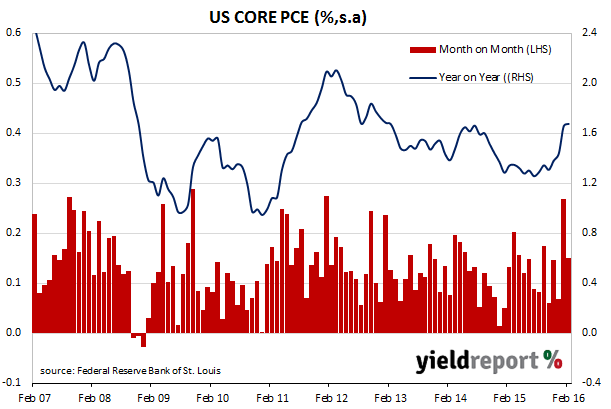Amid the parade of US Fed officials giving speeches about the likely timing of the next US official interest rate rise, one of the few important pieces of data to be released in what is otherwise a quiet time for economic data is the US private consumer expenditure numbers (PCE) for February. Core PCE, which strips out energy and food components, is the US Fed’s preferred measure of inflation and the latest release had core PCE steady at 1.7% for the last 12 months and 0.1% higher than a month ago. In both case, the numbers were less than expected; 1.8% was the expected number for the year and 0.2% was expected for the month. US ten year bonds finished the day 2bps lower at 1.88%.

Whereas last month’s PCE numbers added weight to expectations of official rate rises in the US, the latest batch of data has had a dampening effect. Westpac described the core PCE measure as “slightly disappointing” while ANZ said, “This is still above the Fed’s 1.6% forecast for the final quarter of this year, however, the fact that it undershot expectations could keep the debate about whether the recent lift in core inflation will be sustained alive.” CBA said, “After last night’s PCE deflator printing below expectations at 1.7% y/y there might indeed be a lessened sense of urgency at the FOMC.”

